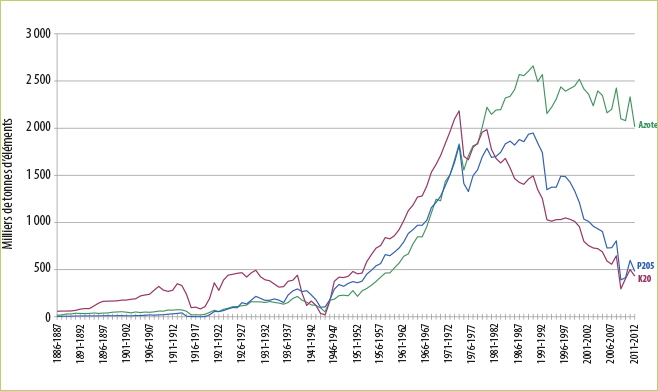Society and regional strategies 3 min
Transforming a scientific mission into societal impacts
The impacts of INRA’s research are achieved after long years of work with various public and private partners. They can be divided into five categories: economic, environmental, policy, public health and regional/societal.
Published on 20 July 2015

Agricultural research aims to improve agriculture, the environment and nutrition by producing and disseminating scientific knowledge, developing innovations and transmitting expertise. Everyone, from economic stakeholders, public policymakers and the general public, benefits from this research, both directly and indirectly. However, determining the exact degree to which these parties benefit and INRA’s role in those multidimensional impacts is extremely challenging as benefits cannot be attributed to a sole stakeholder.
Twenty years: the average time to see results
Converting research work into products
Even if INRA plays a central role, it works with a number of partners that participate throughout the knowledge production and sharing process. This process is long, making the task even more complicated. On average, it takes 19.4 years from when research starts to discern its impact. The complexity of evaluation is also due to the varied nature of the impacts. The ASIRPA team has identified five main categories: economic, environmental, policy, public health and regional/societal.
Such impacts are also a result of significant investments made over decades in infrastructure, genetic collections and other experimental herds. Of course, impacts are also achieved thanks to INRA’s ability to produce knowledge that can be marketed, i.e., converting research efforts into products such as software, technical objects or methods.
A potential impact of 1 to 2 billion euros for genomic selection of cattle
Economic impacts are undoubtedly the most straightforward to evaluate. Measuring the economic impact of research involves identifying the contribution of the various participating stakeholders and determining the derived economic benefits. Genomic selection is one case in point. This technique, used since 2009, consists in cross-breeding animals carrying the most desirable genes in terms of fertility, disease resistance and milk or meat quality in order to obtain a new generation that is better than its parents. The economic impact of this research should amount to between 1 to 2 billion euros (on the basis of impacts already observed), for dairy cattle alone. This is just the beginning: genomic selection will soon be expanded to other animal species (beef cattle and suckler cows, dairy sheep, farm-raised trout, etc.).
Using methanization to achieve both environmental and economic impacts
200,000 tonnes of waste converted into renewable energy
The impact of INRA’s research is not restricted to economic benefits; environmental impacts are also remarkable. INRA’s research unit in Narbonne, France, the Laboratory for Environmental Biotechnology (LBE), developed Provéo, an agricultural, organic and animal waste treatment process using methanization that not only produces energy but reduces environmental impact .The process helps limit greenhouse gas emissions and prevents pollutants reaching groundwater. In 2005, the Institute granted the start-up Naskéo (today Naskéo environnement) an exclusive licence to exploit the process. Results are already being achieved. Today, Naskéo processes more than 200,000 t/year of waste in France, in turn generating more than 5 million renewable watts of electricity. This is an interesting case as the impact is both environmental and economic.
The environment and policies take priority
The ASIRPA project highlighted that 79% of the 30 cases evaluated as part of the study had a multi-dimensional impact. In certain cases, such as with scrapie, the impact concerned all five categories. It was also interesting to see that economic impact is not systematic, with just 53% of cases seeing an economic impact versus 63% an environmental impact. However, this is not surprising given that INRA does not conduct research based on financial considerations alone. INRA’s research influences public policies as frequently as it provides economic benefits and its laboratories play a key role. This was demonstrated in the example of the research on BPA, which had an important impact on public health as well.
€3 billion saved over 25 years
Decision support tools (DST) developed by INRA since the end of the 1980s for agricultural producers (Azobil in 1990, Azodyn at the end of the nineties and Azofert in 2003) have helped considerably reduce the amounts of nitrogen fertilizer used on crops, at a savings of more than €3 million over 25 years. However, research that led to the very first DSTs goes back to the 1950s! The impact of lower nitrogen fertilizer use is not just economic, but also environmental. Measurable reductions of water pollution and greenhouse gases have been observed.

